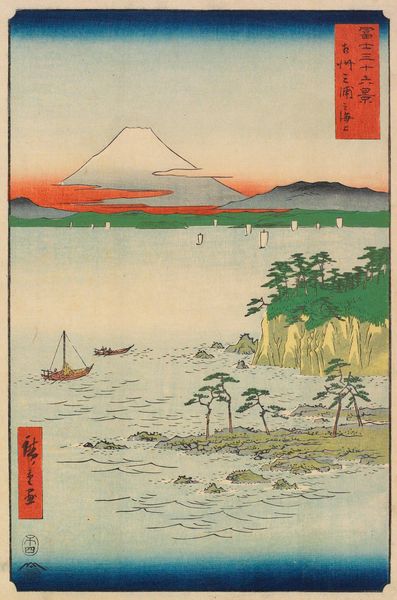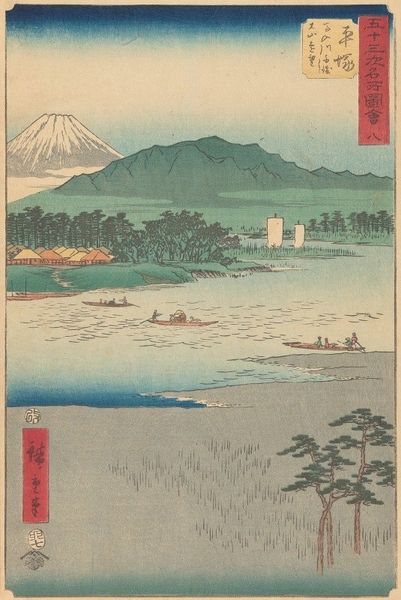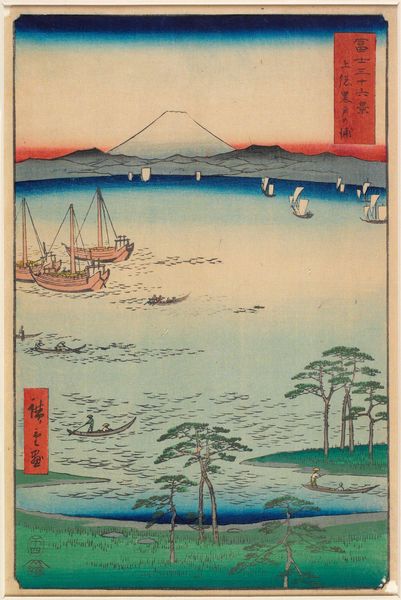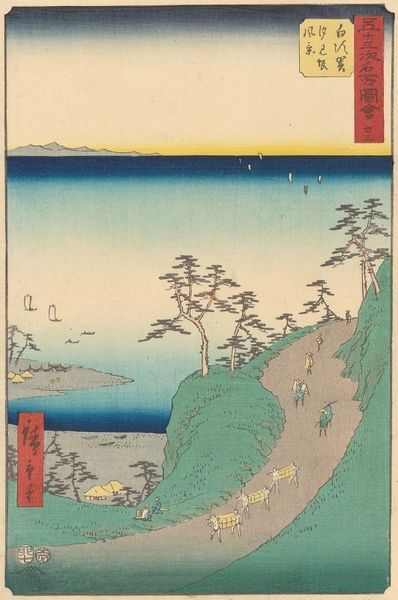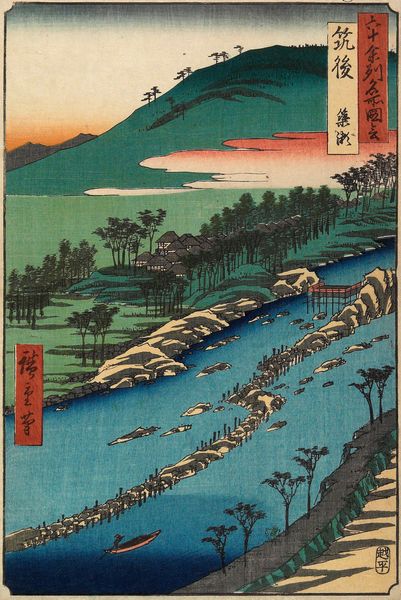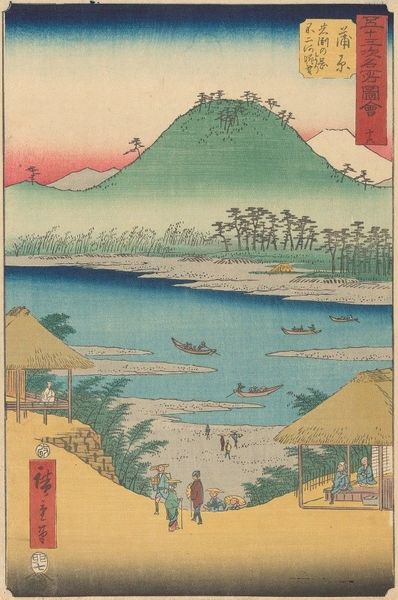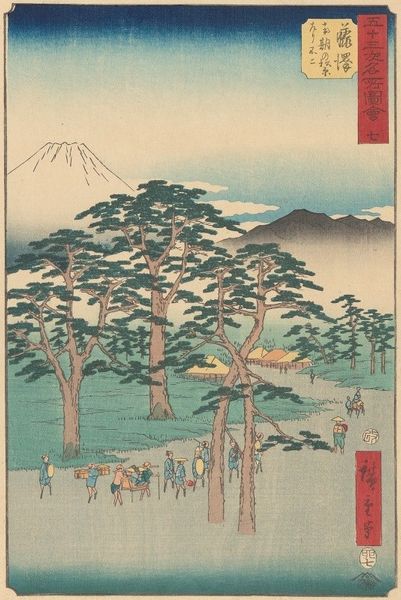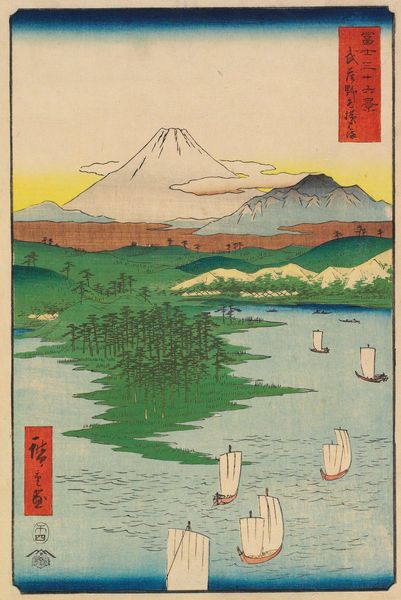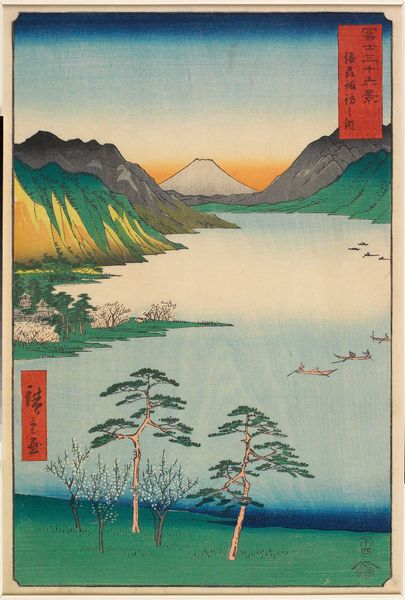
print, woodblock-print
# print
#
asian-art
#
landscape
#
ukiyo-e
#
woodblock-print
Copyright: Public Domain: Artvee
Editor: So, this woodblock print is titled "Arai," created around 1855 by Utagawa Hiroshige. The way the landscape is rendered – the mountain, the water, and the tiny figures – gives me a sense of tranquility and distance. What strikes you most about this piece? Curator: I am drawn to the materiality and the process. This is more than just an image; it's a product of labor, a testament to the skilled artisans who carved the blocks and carefully applied the inks. Each line speaks of their craft. Have you considered the socio-economic implications of Ukiyo-e prints? Editor: I hadn't, really. Beyond their aesthetic value, what was their role? Curator: These prints were commodities, mass-produced for a growing urban consumer culture. They weren’t precious objects for the elite, but affordable art for the masses. Think about the supply chain: the paper makers, the block cutters, the printers, and the distributors. "Arai" is as much about this system of production as it is about the depiction of a scenic view. What do you think the repetitive nature of printmaking allowed for in terms of distribution of imagery? Editor: That’s fascinating! So, the beauty of the image is intertwined with its function as a consumer good, accessible to ordinary people. Mass production democratized art? Curator: Precisely! And that accessibility also allowed for the dissemination of ideas and cultural values. Look closely at the figures within the landscape, for example: they become standardized representations, reflective of the cultural narratives being circulated and consumed at the time. These prints weren't neutral depictions, they were actively shaping perceptions. Editor: I see your point. Considering it as a product changes everything! It is fascinating to think about art beyond just aesthetics.
Comments
No comments
Be the first to comment and join the conversation on the ultimate creative platform.
